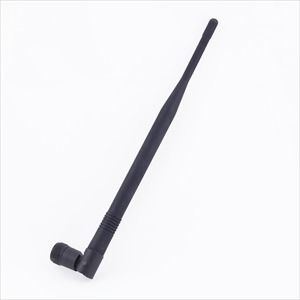
868 MHz LoRa antennas – a selection guide
868 MHz LoRa antennas are becoming a hot topic in our markets. Using the licence-free ISM frequency bands, LoRa is a long range, but low power wireless technology that is increasingly being used for IoT technology. By wirelessly enabling devices and terminals to operate using LoRa technology, applications can be developed for control and monitoring without the need to use mobile cellular networks such as GSM, 3G or LTE. All of the LoRA enabled nodes will need an antenna of some description and here we look at some options to help enable your 868 MHz IoT environment.
There are many choices of 868 MHz LoRa antennas, but we’ll focus on internal, terminal mount and outdoor omni antennas to cover requirements for remote devices and hub/concentrator applications.
In areas of low signal or for concentrator applications where a higher gain antenna is required, an outdoor omni antenna is often a good choice. Especially if you can select an antenna with good gain figures, the nature of an omni-directional antenna in radiating in a 360 degree pattern allows communication with other devices and hubs in every direction. These outdoor antennas can be wall or pole mounted and can be supplied with various levels of gain depending on the antenna size – see the DMO8684 for a 4.3 dBi gain in a compact package or the WMO86916 for a 5.8 dBi gain version which is a bit larger.
For external mount antennas where the following terminal antennas cannot be deployed, sometime a compact wall-mount antenna offers a useful alternative. Perhaps the radio is housed in a metal enclosure or a cabinet and a terminal antenna will not fit directly onto it. An antenna like the Wall-Blade which has a small footprint might well solve the problem.
For terminal mount antennas i.e. antennas that mount directly onto the device or terminal, typically you can go with a small stub antenna like the WS868 and the MW868 or a dipole style antenna similar to the BKR868 or HWD868. The stub antennas are smaller, however usually offer lower performance than the longer whip or dipole antennas. The selection of the terminal antenna depends on the environment in terms of space available and the desired performance. Captive mount terminal antennas are also possible where the antenna is locked in placed with a nut so it cannot be removed and the antenna is connected via an integrated coaxial cable and connector – for an example see the W868-FLY.
For internal mount antennas, a simple solution is a groundplane independent PCB such as the IoTa or Morava antenna. These antenna mount inside a non-metal enclosure or terminal housing with a minimum of 15mm clearance from any metal components or surfaces and can provide a discreet way of enabling 868 MHz communications without the need for external antennas.
Hopefully the above information has given you some food for thought about possible LoRa antenna solutions and offered some suggestions on how to enable antenna solutions with your application. For customers not using 868 MHz, for example in the USA or New Zealand, many of the above antennas can be re-tuned for 915 MHz if required or have 915 MHz options.
For customers in Europe, the some of these antennas including the WMO86916, DMO8684 and IoTA can be purchased via the Connex webshop. For other questions, requests and quotes for 868 MHz LoRa antennas, please feel free to contact us.
